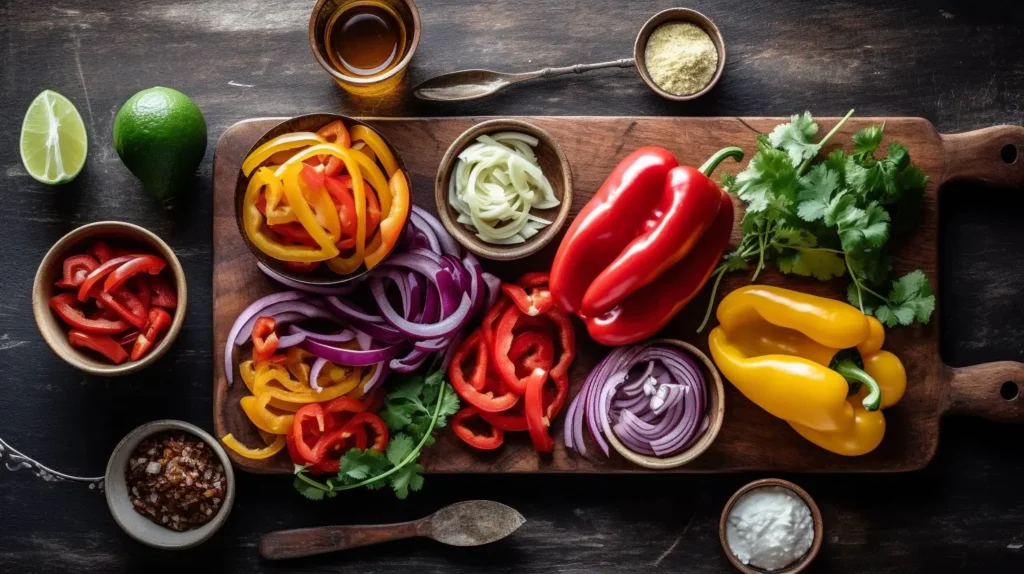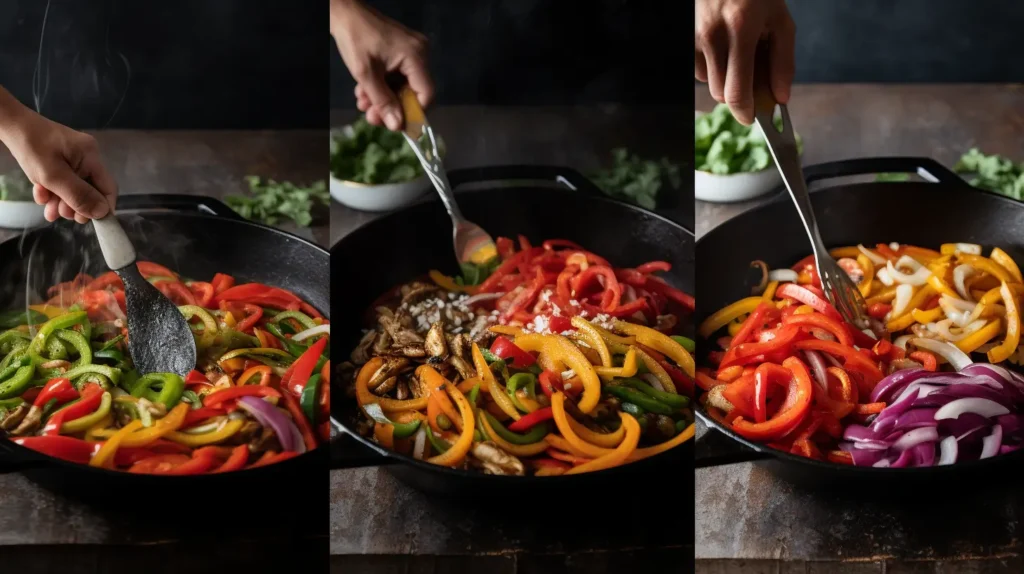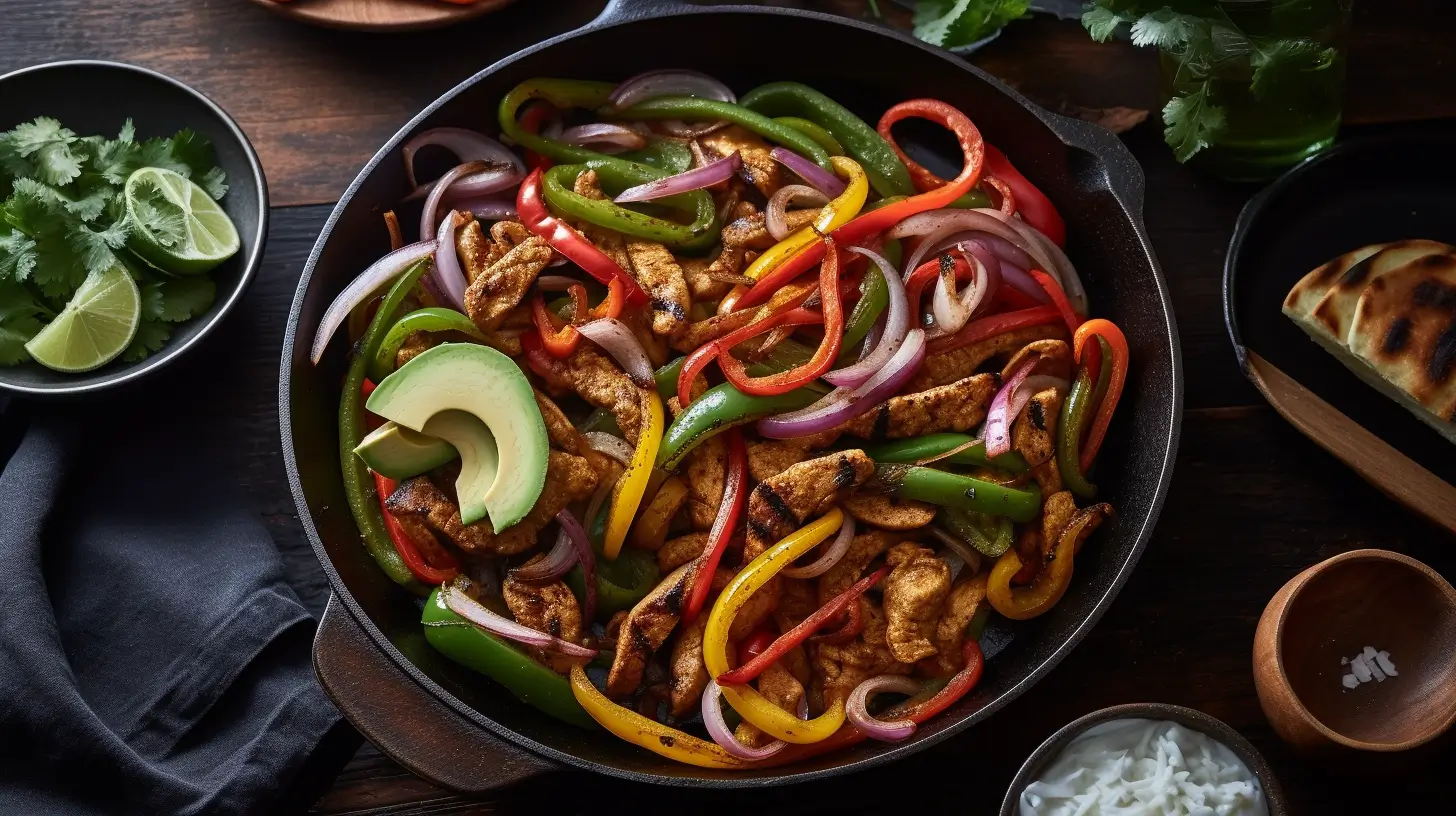Table of Contents
INTRODUCTION
Picture this: sizzling bell peppers and onions with just the right amount of caramelization, all while filling your kitchen with a smoky aroma that’s guaranteed to make your mouth water. Now that’s the magic of Chipotle fajita veggies! Whether you’re trying to recreate your favorite burrito bowl or looking for a healthy, flavorful side dish, these veggies deliver on all fronts.
You don’t need fancy tools or a long list of ingredients to bring this recipe to life. With just a few simple steps, you can whip up fajita veggies that taste just as good (if not better) than the ones at Chipotle. And the best part? They’re versatile enough to pair with nearly any meal.
Let’s dive into why these veggies are a must-try and how you can make them at home.
Why Chipotle Fajita Veggies Are a Game-Changer
We all know the feeling—you’re building a burrito or a bowl, and the addition of fajita veggies takes the dish to the next level. But what makes them so special? Let’s break it down.
1. Versatility at Its Best
Fajita veggies aren’t just for burritos. You can use them in tacos, salads, bowls, or even as a standalone side. What’s more, they complement nearly any protein, from grilled chicken to tofu.
2. A Healthy, Flavorful Boost
Packed with vitamins and antioxidants, bell peppers and onions are not only delicious but also good for you. Plus, they’re naturally vegan, gluten-free, and low in calories.
3. Quick and Easy to Prepare
Even on busy weeknights, you can have these veggies ready in under 15 minutes. They’re solid proof that healthy cooking doesn’t have to be complicated.
Looking for more veggie-packed dishes? Check out Optavia Spaghetti Squash Lasagna: Healthy & Delicious for another nutritious option.
Ingredients for Chipotle Fajita Veggies
To make this recipe, you’ll only need a handful of fresh ingredients:

| Ingredient | Quantity | Notes |
| Bell Peppers (any color) | 3 large | Choose a mix of red, yellow, and green for variety. |
| Red Onion | 1 large | Slice thin for even cooking. |
| Olive Oil | 1 tbsp | For sautéing the vegetables. |
| Oregano | 1 tsp | Adds an earthy depth of flavor. |
| Salt | To taste | Balances the sweetness of the veggies. |
| Black Pepper | To taste | Adds a subtle kick. |
Step-by-Step Guide to Making Chipotle Fajita Veggies
Now, let’s get cooking! By following these simple steps, you can make fajita veggies that are just as flavorful as the ones you love from Chipotle.
1. Prep Your Veggies
Start by washing your bell peppers and onions. Next, slice the bell peppers into thin strips, removing the seeds and stems. For the onion, cut it in half, peel it, and then slice it into thin half-moons.
Pro Tip: Using a mix of bell pepper colors, such as red, yellow, and green, not only makes your dish more visually appealing but also improves its flavor.
2. Heat the Skillet
Place a large skillet on medium-high heat and drizzle in the olive oil. Let the oil heat until it shimmers, which means it’s hot enough for cooking.
Transition Tip: While the oil heats, take a moment to make sure your veggies are sliced evenly. This helps them cook uniformly and at the same speed.
3. Cook the Onions First
Add the sliced onions to the skillet and stir them from time to time. Cook for about 1 minute to give the onions a head start. They’ll soften and release their natural sweetness.
4. Add the Bell Peppers
Next, toss in the bell peppers. Then, stir to combine them with the onions, making sure every piece gets a touch of olive oil. After that, sprinkle the oregano, salt, and black pepper evenly over the veggies.
Transition Tip: Be careful not to over-stir. Instead, let the veggies sit for a few seconds at a time, as this helps them develop those delicious charred edges.
5. Sauté Until Perfectly Tender
Cook the veggies for 5–7 minutes, stirring occasionally. During this time, aim for a tender-crisp texture, so that the veggies are softened but still retain a slight crunch.
Sautéing vegetables properly brings out their natural sweetness and improves their texture. Here’s a step-by-step guide.
6. Serve Immediately
After cooking, take the veggies out of the skillet and serve them while they’re still hot. Not only are they perfect as a side dish, but they also work beautifully as a taco filling or a topping for rice bowls.

Tips for the Best Fajita Veggies
- Use High Heat: Cooking on high heat helps the veggies caramelize without becoming soggy.
- Don’t Overcrowd the Pan: If the pan is too full, the veggies will steam instead of sauté. Cook in batches if needed.
- Customize the Flavor: Add garlic, smoked paprika, or chili powder for extra layers of flavor.
- Make It Spicy: Toss in some sliced jalapeños or crushed red pepper flakes if you like heat.
How to Use Chipotle Fajita Veggies in Your Meals
The beauty of fajita veggies lies in their versatility. In fact, here are a few creative ways to use them:
1. Classic Tacos
Layer these veggies with your favorite protein in soft tortillas. Then, add guacamole and salsa to create the perfect taco night.
2. Burrito Bowls
Top a bowl of rice and beans with these veggies. After that, add shredded cheese and sour cream to complete a filling, healthy meal.
Bonus Idea: Pair this with The Crockpot Mac and Cheese You’ll Ever Make for a mix of comfort food and health-conscious sides.
3. Protein-Packed Pairing
Serve fajita veggies alongside grilled chicken, shrimp, or tofu for an easy way to create a balanced and colorful plate.
FAQs About Chipotle Fajita Veggies
1. Is It Possible to Prepare Fajita Veggies in Advance?
Absolutely! You can store cooked veggies in an airtight container in the fridge for up to 3 days. Then, reheat them in a skillet to easily revive their texture.
2. What’s the Best Way to Slice the Veggies?
Slice them thin and even, as this way they cook uniformly while also achieving that tender-crisp texture.
3. Can I Freeze Fajita Veggies?
While fresh is best, you can freeze cooked fajita veggies. Reheat them on the stove to remove any excess moisture.
4. Are Chipotle Fajita Veggies Gluten-Free?
Yes, they are naturally gluten-free, so this makes them a great option for anyone with dietary restrictions.
Conclusion
Chipotle fajita veggies are not only simple but also a flavorful way to bring a restaurant-quality touch to your home-cooked meals. Whether you’re recreating your favorite burrito bowl or looking for a quick, healthy side dish, these veggies are guaranteed to impress.
Pick up your skillet and try out this recipe! Don’t forget to share your creations in the comments, as we’d love to hear how you made this dish your own. And if you’re ready to transform your dinner game, these fajita veggies are calling your name.

